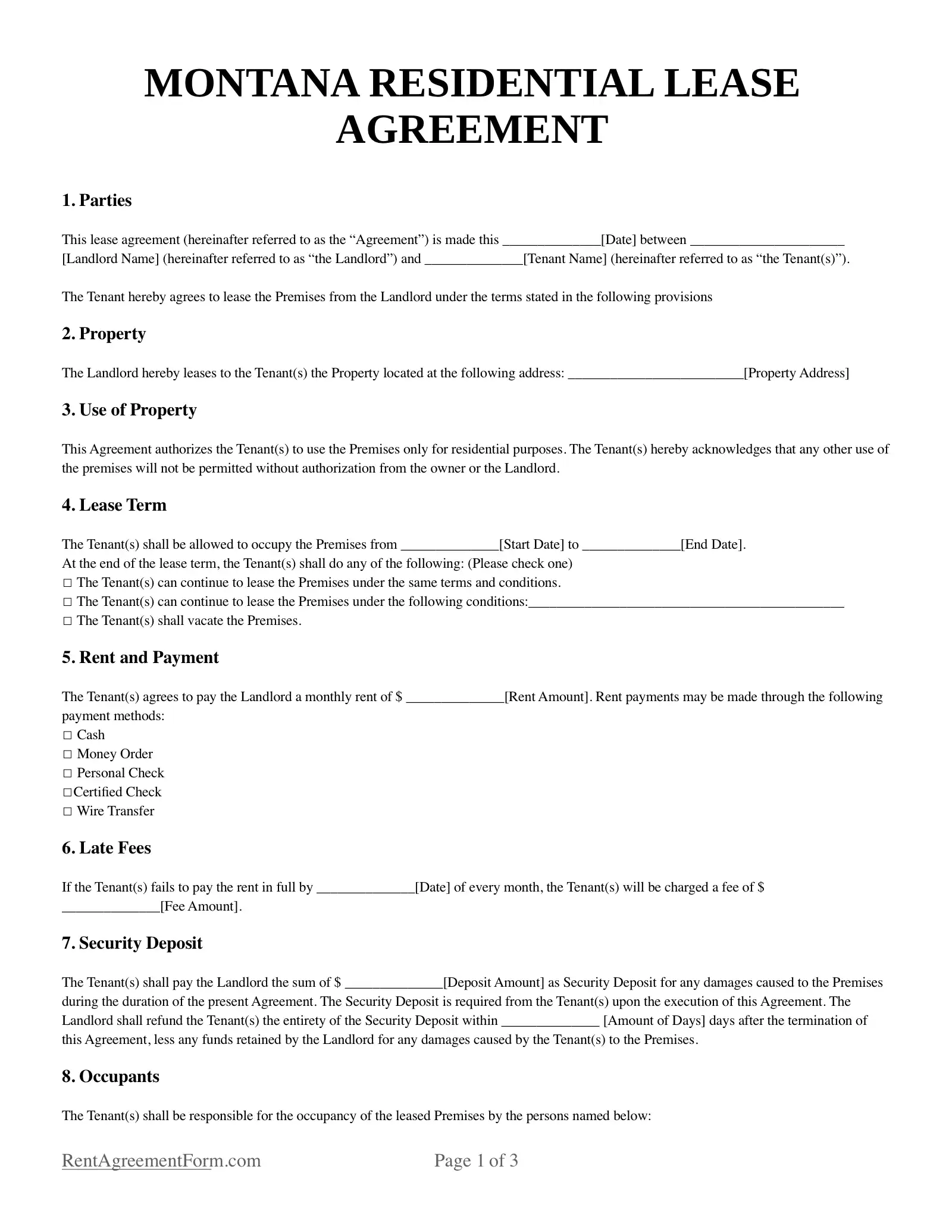Montana Residential Lease Agreement Form
A landlord and tenant must have a formal agreement to protect their rights and interests during a tenancy. That is the main purpose of the residential lease agreement form. It is a binding document that dictates the terms of occupancy of a property.
The property for lease can be a room, an apartment, or condominium unit, or a house. When a potential lessee would like to rent a specific property, he or she will submit a rental application to the landlord. This document formally signifies their interest. If approved, the landlord and tenant will come up with a residential lease agreement form that is mutually agreeable.
While a rental agreement can be written or oral, a lease agreement is usually written. A standard form contains details about the property, a description of it, and its address. It also mentions the rent amount and due date, which is usually on the first of every month. The landlord and tenant can also agree on another date.
The document must enumerate the responsibilities of both parties. For example, the landlord must ensure the rental property in real Montana is safe for occupancy. The tenant, on the other hand, must pay rent on time and assure the landlord that the unit will be taken care of.

Residential Lease Agreement Required Disclosures in Montana
- Lead-Based Paint Disclosure Rule - All landlords are required to disclose if the property being rented was built before 1978. This is because most structures at the time used lead-based paint. Landlords must also provide educational materials about the dangers of lead-based paint together with their disclosure (Lead-Based Paint Hazard Reduction Act of 1992 § 1018).
- Mold Disclosure - Realtors and landlords in Montana must provide a formal statement that discloses any mold-related issues on the property. It must state that the property has never had mold problems before. If the property has been subject to mold, the disclosure should declare that the infestation was treated and there are mitigating measures are in place (M.C.A. § 70-16-703).
- Methamphetamine Drug Lab Disclosure - The tenant has the right to know if the rental unit has been used as a methamphetamine drug laboratory. The smoke used in a drug lab can be detrimental to the health of the occupants (M.C.A. § 75-10-1305).
- Move-in Checklist - Before collecting a security deposit from the tenant, a Montana landlord must provide a move-in checklist. This document comes after a tenant’s property inspection. It mentions the absence of pre-existing damage or lists damages that were already there to free the tenant from undue accountability (M.C.A. § 70-25-206).
- Disclosure of Identification of Responsible People - It is also the landlord’s responsibility to name the people who are authorized to enter the premises (M.C.A. § 70-24-301).
Rent Grace Period in Montana
There is no Montana statute on the rent grace period. In the same manner, there is no statute on late fees but both parties can agree to impose late fees if the tenant fails to pay rent on time.
Security Deposits in Montana Residential Lease Agreements
There is no statute on security deposits in Montana. This means a Montana landlord can ask for any amount as a security deposit. The state also doesn’t require the security deposit to be placed in a separate bank account.
At the end of the tenancy, the landlord has 10 days to return the security deposit or its balance. The landlord has the right to deduct an amount for the repair of any damage to the property.
“Every landlord, within 30 days subsequent to the termination of a tenancy or within 30 days subsequent to surrender and acceptance of the leasehold premises, whichever occurs first, shall provide the departing tenant with a written list of any rent due and any damage and cleaning charges” (M.C.A. § 70-25-201).
The list must be accompanied by the balance of the security deposit.
In some cases, the landlord may impose a penalty on early termination of the lease agreement because of the loss of income as a result of breaking the contract.